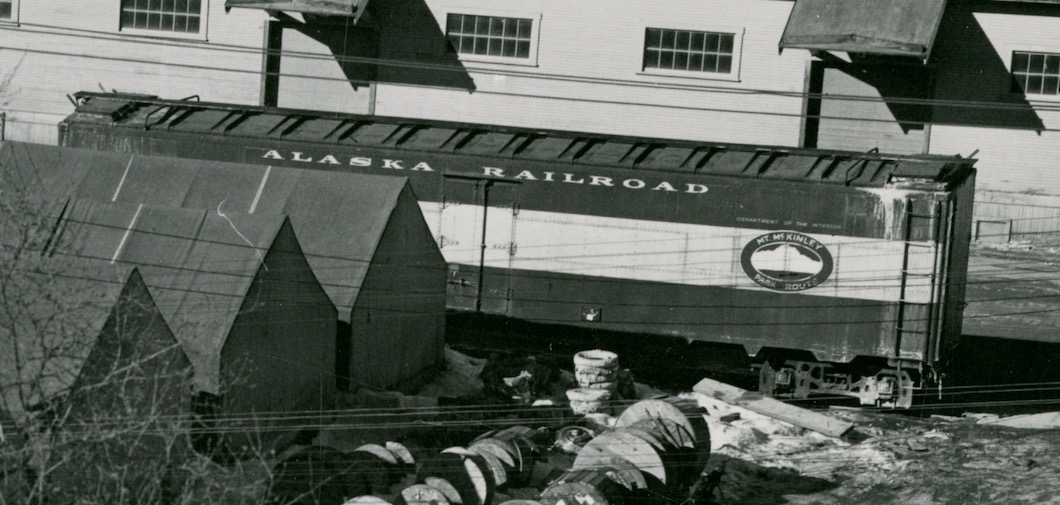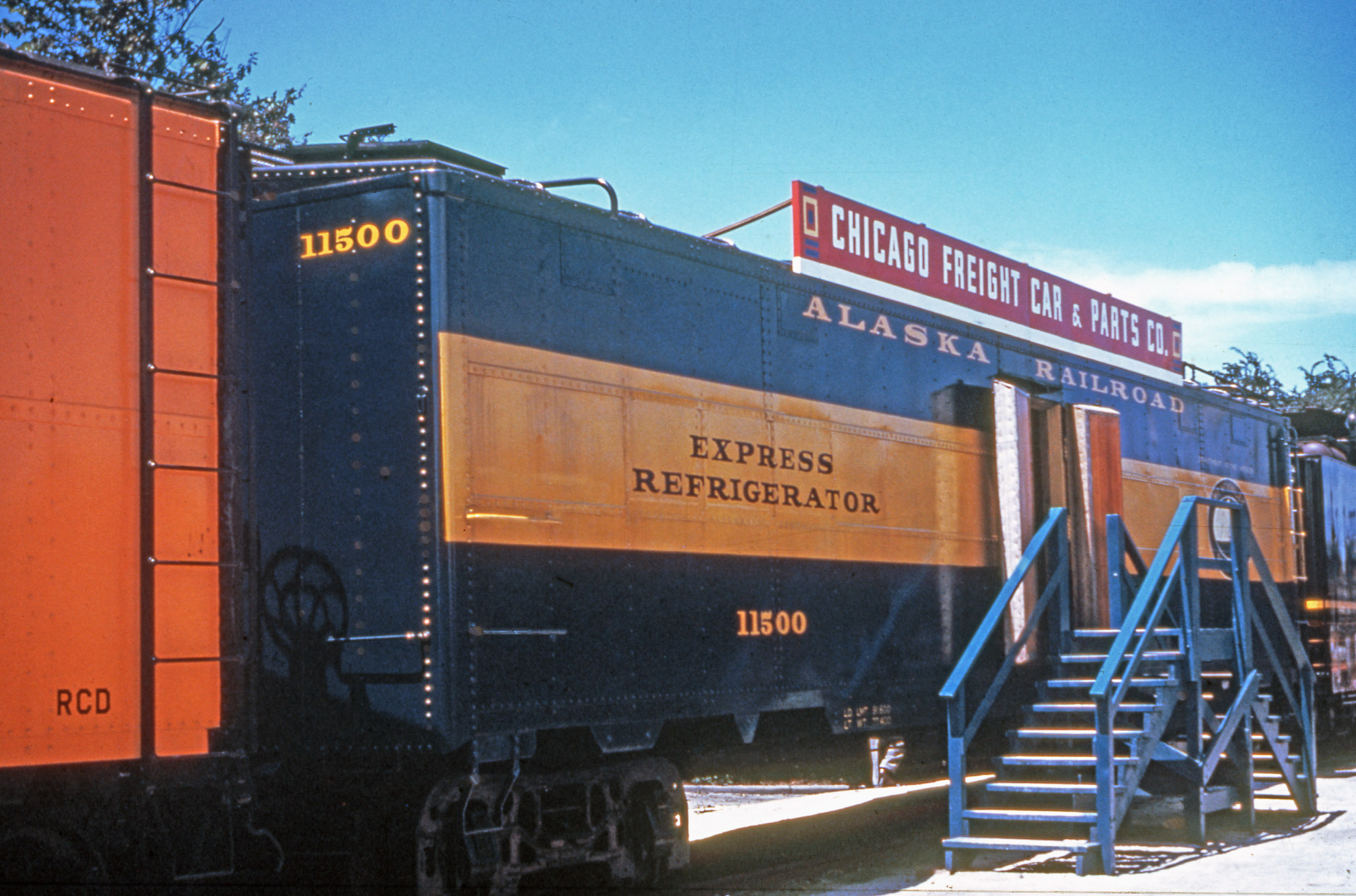"Here is a cropped image from May 1949, Anchorage Yard, First Avenue across from the Freight Shed. Troop kitchen converted reefer in passenger paint! Pretty cool find. Have seen several images of the yellow reefers, this is the second, and the best, image of a blue and gold one." - Casey Durand "Casey, CFCP had one of the express car conversions on display at the Chicago RR Fair in the late 1940's. The railroad fair ran 2 or 3 years, but I understand the ARR car was only displayed for one year (season) of the fair. "There's also a black & white side view of one in Prince's ARR book volume 2, page 757. That might be useful if you're doing lettering / sizing / etc." - Don Marenzi "Casey, I remember seeing these cars operating in revenue service back in the 1950s, however, I do not have any photographs of them doing so. As I recall, they would occasionally be on one of the troop trains that would work in and out of Whittier. I also remember them on the coach tracks in Anchorage after we moved there in 1959. "Effectively, they were the last descendants of a tradition that started on the railroad in about 1923/24. In that year, the railroad took 20 Panama flat cars and rebuilt them into insulated box cars with charcoal stoves in one end and numbered 902-921. They were known as the “Hot Cars”, even in the Official National Railroad Equipment Register listing. Six of these cars, 902-904 and 919-921, were painted green (from which, they became known as the “Green Cars”) for use in passenger service and it is fairly common to see photos of passenger or mixed trains during the steam era with these cars in the consist. Eventually, they were renumbered 91-96. In fact, they proved so useful that in the late 1930s, after the CR&NW went out of business, the ARR acquired some additional flat cars and box cars from them and converted nine of the "Cordova Flats” into additional insulated, heated, green boxes numbered 71-79. All 15 of the Green Cars had refrigerator doors as did most insulated box cars on all North American railroads. "The LCL revenue that these cars handled had been a really important contribution to keeping the passenger service on the railroad somewhat closer to being solvent between 1923 and 1948 so when the troop sleeper conversion started, it was natural to create some more “modern” equivalents of the green cars and also paint them for passenger service. As it turned out, their days were numbered, not simply because the surviving passenger service eventually became self supporting but also because of the introduction of the container service on the ARR in the early 1950s. This proved to be a much more flexible and economical way to provide LCL service than were the insulated box cars. "The last insulated boxes on the ARR were the 10800s acquired in the mid 1960s for service out of Seattle on the barges for goods requiring keep-from-freezing service. "Now, as to photographs, I will tell you what I do have. About 1980, I took on a project to try and track down all the remaining revenue cars on ARR that had been converted from troop sleepers. I eventually came up with over 20 varieties of equipment, including a few of the insulated boxes that you are interested in. However, by this time, all the survivors had been repainted to either box car red or yellow. So, I’m unable to help on the passenger paint. However, I will dig out the photos I took at that time and send you copies. "Also - I recently came up with a set of 1946 rosters of ARR equipment that was prepared by an investigating committee of Department of the Interior that was looking into ARR service and pricing issues in anticipation of the funding of the reconstruction that would start over the next few years. The copy I have of their report happens to be the one belonging to the railroad’s General Manager. The equipment portion of the report has some level of detail on construction condition of the equipment, and, in some cases, the origins of some of the second hand items. Since the report was typed and the copy is all on thin, carbon copy type paper, I have to be VERY careful in putting together copies and, in some cases, rather than making copies of pages I have retyped pages into electronic files or, in the case of tables, put them into spreadsheet formats. In any case, When I complete the listings of the ARR passenger and freight equipment I will send you (and those copied on this note) the spreadsheet. It may still have a goodly number of question marks at that time, however, I have managed to track down a lot of information on the equipment on ARR’s World War II and pre-war rosters. "I’m using it to gradually build up a group of N scale models of the early equipment. So far, I have about 20 of them completed or under construction, including one of the Colorado Midland side door cabooses that ARR acquired in 1918. I also have one of the freight service insulated box cars in the 900 series and I am working on three of the passenger service insulated cars that were rebuilt from the Cordova Flats." - John Gray
|

